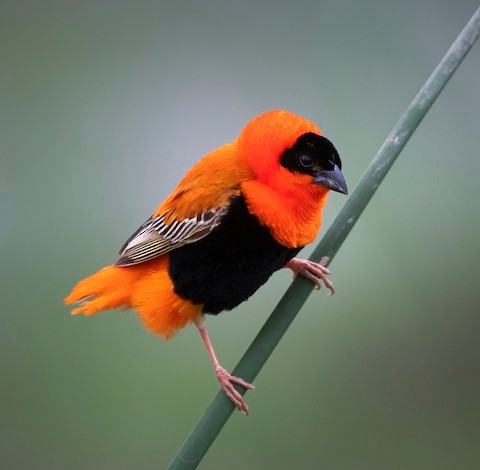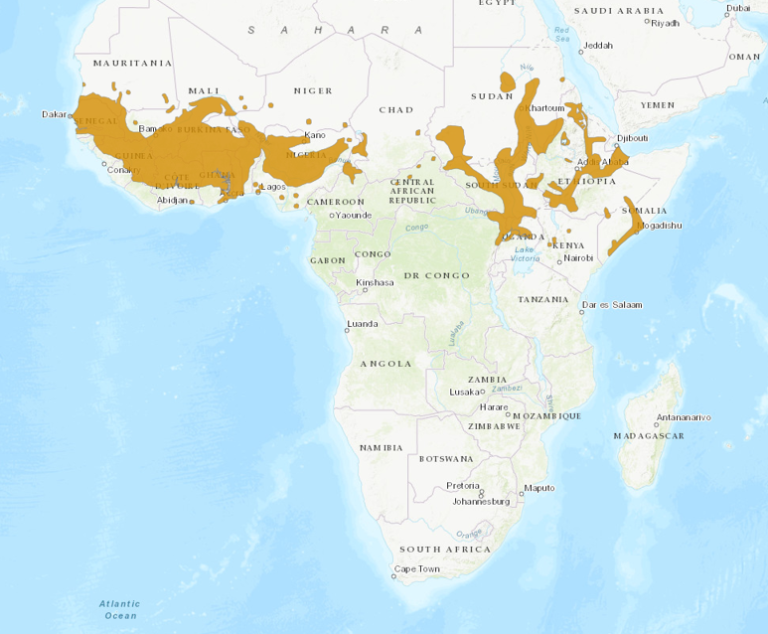Birdfinding.info ⇒ Locally common in several parts of its natural range. Areas where it is generally numerous include: low-lying grasslands and wetlands of Senegal and Gambia; Mole National Park in Ghana; the central valley of Ethiopia; around Lake Albert in Uganda; and Lake Baringo in Kenya. In the U.S., introduced birds can be found at several sites in southern California: e.g., Peck Road Water Conservation Park in Los Angeles and San Joaquin Marsh in Irvine. On Puerto Rico, it is especially common in the southwest around Laguna Cartagena, Boquerón Wildlife Refuge, and Cabo Rojo; and along the northern coast: e.g., Caño Tiburones, Hacienda La Esperanza, and Gramas Lindas in Toa Baja.
Northern Red Bishop
Euplectes franciscanus
Family: Ploceidae
Grasslands of Africa between the Sahara and the Equator.
Resident across most of the Sahel from Senegal and the southern edge of Mauritania east to northern Cameroon and southern Chad, and more patchily east to central Sudan, northern Eritrea, and Somaliland. Also locally southward in more humid parts of tropical West Africa from Côte d’Ivoire to southern Nigeria, and on savannas of East Africa south to Uganda, Kenya, and southern Somalia.
Introduced populations are well-established southern California and the coastal lowlands of Puerto Rico.
In California, it is mainly associated with riparian corridors of Greater Los Angeles, and occurs at least sporadically west to Ventura, east to San Bernardino, and south to the Tijuana River mouth. Occasional in central California from Sacramento to Santa Cruz.
Smaller introduced populations appear to be more tenuously established around Houston, Texas, and in the West Indies on Jamaica (west of Kingston), Guadeloupe (Morne à l’Eau), and Martinique.
Identification
Males in breeding plumage are distinctive: with a jet-black helmet and breast, and orange or scarlet ruff, back, rump, vent, and tail.

Northern Red Bishop, male in breeding plumage. (Abuko Rice Fields, Gambia; November 25, 2013.) © Frans Vandewalle
Differs from other male red bishop species in the distribution of red and black feathering—in particular, the others all have black throats.

Northern Red Bishop, male displaying. (Shoreline Park, Mountain View, California; July 4, 2019.) © Tony Gentilcore
The red or orange plumes are elongated to varying degrees, distorting its apparent body shape. When displaying, the male puffs out its plumage, bulging around the neck and irregularly on the back, belly, and undertail.

Northern Red Bishop, male displaying. (Peck Road Water Conservation Park, Los Angeles, California; October 7, 2017.) © Lisa Negri

Northern Red Bishop, male in breeding plumage, with neck ruff relaxed, showing full extent of black on head. (Langham Creek, Concord Colony, Harris County, Texas; September 4, 2017.) © Greg Page
Females and males in basic plumage are sparrow-like: with boldly streaked upperparts and mostly unstreaked underparts—whitish on the belly and buffy on the chest and sides. Often lightly streaked on the sides of the chest.
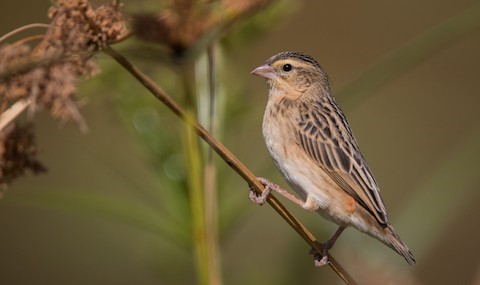
Northern Red Bishop, basic plumage—apparently a male showing reddish tones. (Lake Ziway, Ethiopia; January 10, 2015.) © Ian Davies

Northern Red Bishop, female (accompanying male out of view). (Peck Road Water Conservation Park, Los Angeles, California; September 17, 2016.) © Mark Scheel
Facial markings consist of a short buffy or yellowish eyebrow, an otherwise pale-brown face, and a finely streaked crown.

Northern Red Bishop, basic plumage. (Playa Vista Riparian Corridor, Los Angeles, California; July 4, 2010.) © Don Sterba
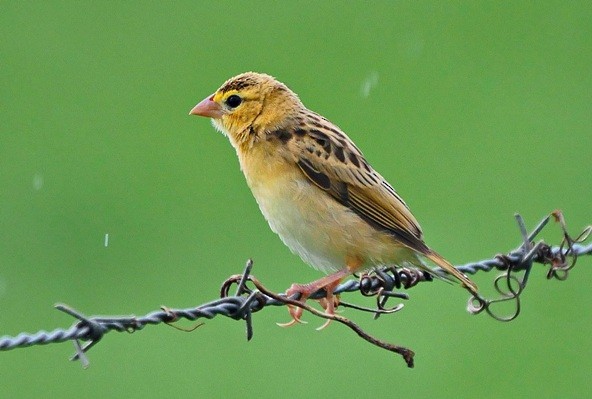
Northern Red Bishop—apparently a juvenile, based on exceptionally buffy face. (La Parguera, Puerto Rico; September 8, 2017.) © Sadhu Govardhan
Males in transition into and out of breeding plumage go through various irregular blotchy stages.
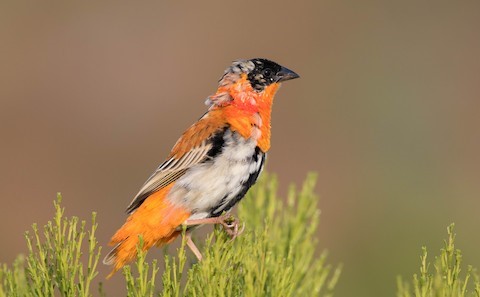
Northern Red Bishop, male in transitional plumage. (San Diego River Estuary, California; July 8, 2017.) © Mel Senac
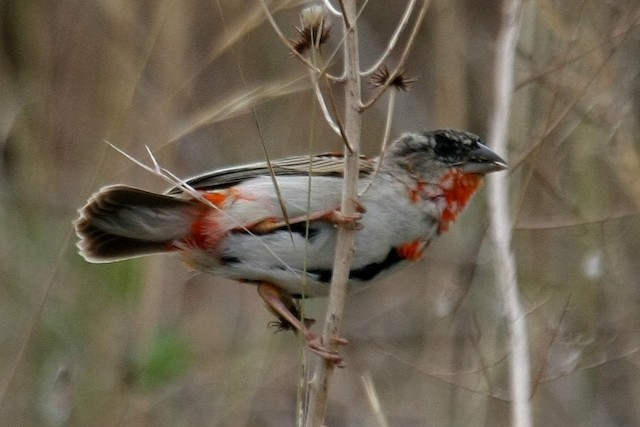
Northern Red Bishop, male in transitional plumage. (Playa Vista Riparian Corridor, Los Angeles, California; June 2, 2013.) © Don Sterba
Voice. Typical song consists of chipping that begins slowly, briefly intensifies, then fades: The song is often very simple and nonchalant:Typical calls include a low, raspy chek!:
Notes
Polytypic species consisting of two recognized subspecies. Formerly considered conspecific with the Southern Red Bishop (orix), known collectively as the Red Bishop (orix).
More Images of the Northern Red Bishop

Northern Red Bishop, male displaying. (IRWD San Joaquin Marsh & Wildlife Sanctuary, Irvine, California; June 6, 2020.) © Derek Hameister

Northern Red Bishop, male displaying. (Peck Road Water Conservation Park, Los Angeles, California; September 17, 2016.) © Mark Scheel
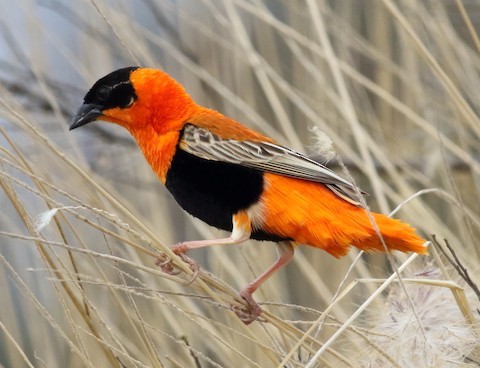
Northern Red Bishop, male in breeding plumage. (San Diego River Estuary, California; August 2, 2017.) © Jim Pea

Northern Red Bishop, male displaying. (Laguna Cartagena National Wildlife Refuge, Puerto Rico; September 2, 2013.) © Stephen Gast
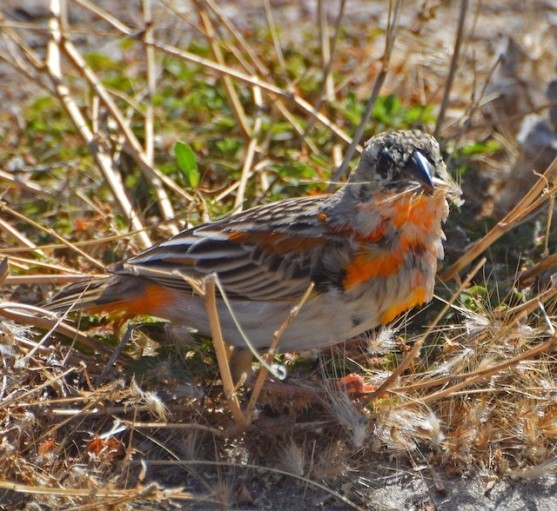
Northern Red Bishop, male in transitional plumage. (San Diego River Estuary, California; June 27, 2017.) © John Bruin
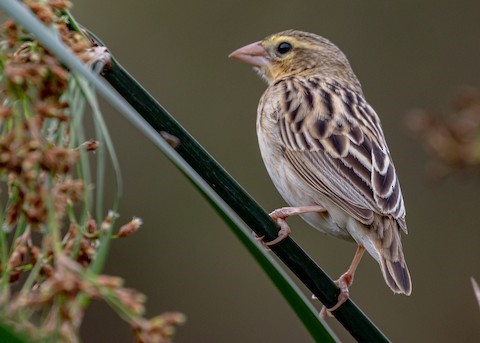
Northern Red Bishop, basic plumage. (El Dorado Regional Park, Long Beach, California; June 29, 2021.) © Alan Wells
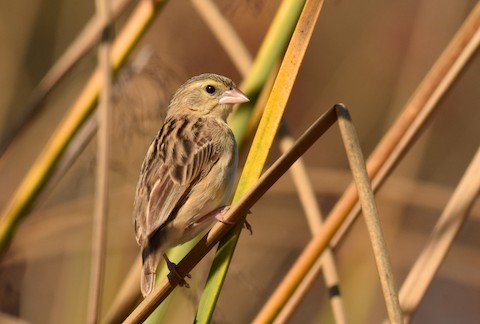
Northern Red Bishop, basic plumage. (Madrona Marsh, Torrance, California; November 5, 2019.) © Ryan O’Donnell

Northern Red Bishop, basic plumage. (Lawrence Park, Houston, Texas; February 20, 2018.) © Bob Friedrichs
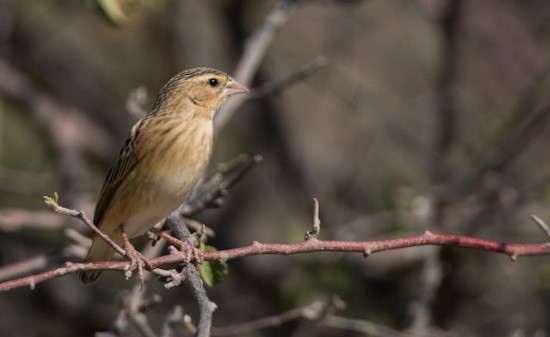
Northern Red Bishop, basic plumage. (Awash National Park, Ethiopia; December 24, 2014.) © Ian Davies
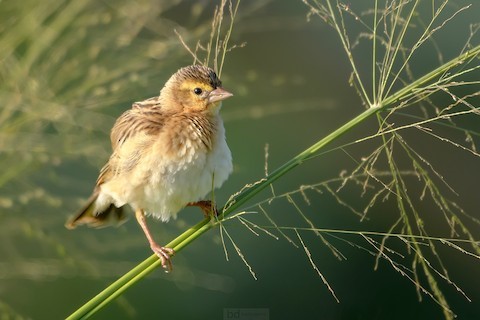
Northern Red Bishop, basic plumage. (Lajas, Puerto Rico; February 17, 2019.) © Benny Diaz

Northern Red Bishop, basic plumage. (Lawrence Park, Houston, Texas; February 20, 2018.) © Bob Friedrichs

Northern Red Bishop, basic plumage. (IRWD San Joaquin Marsh & Wildlife Sanctuary, Irvine, California; October 15, 2017.) © Garrett Lau
References
Alderfer, J., and J.L. Dunn. 2014. National Geographic Complete Birds of North America. National Geographic Society, Washington, D.C.
BirdLife International. 2018. Euplectes franciscanus. The IUCN Red List of Threatened Species 2018: e.T22719181A131991350. https://dx.doi.org/10.2305/IUCN.UK.2018-2.RLTS.T22719181A131991350.en. (Accessed February 21, 2022.)
Borrow, N., and R. Demey. 2004. Birds of Western Africa. Princeton University Press.
Brazil, M. 2009. Birds of East Asia. Princeton University Press, Princeton, N.J.
eBird. 2022. eBird: An online database of bird distribution and abundance. Cornell Lab of Ornithology, Ithaca, N.Y. http://www.ebird.org. (Accessed February 21, 2022.)
Kirwan, G.M., A. Levesque, M. Oberle, and C.J. Sharpe. 2019. Birds of the West Indies. Lynx Edicions, Barcelona.
Raffaele, H. 1989. A Guide to the Birds of Puerto Rico and the Virgin Islands. Princeton University Press.
Raffaele, H., J. Wiley, O. Garrido, A. Keith, and J. Raffaele. 1998. A Guide to the Birds of the West Indies. Princeton University Press.
Sinclair, I., and P. Ryan. 2003. Birds of Africa South of the Sahara. Princeton University Press.
Xeno-Canto. 2022. Northern Red Bishop – Euplectes franciscanus. https://xeno-canto.org/species/Euplectes-franciscanus. (Accessed February 21, 2022.)
